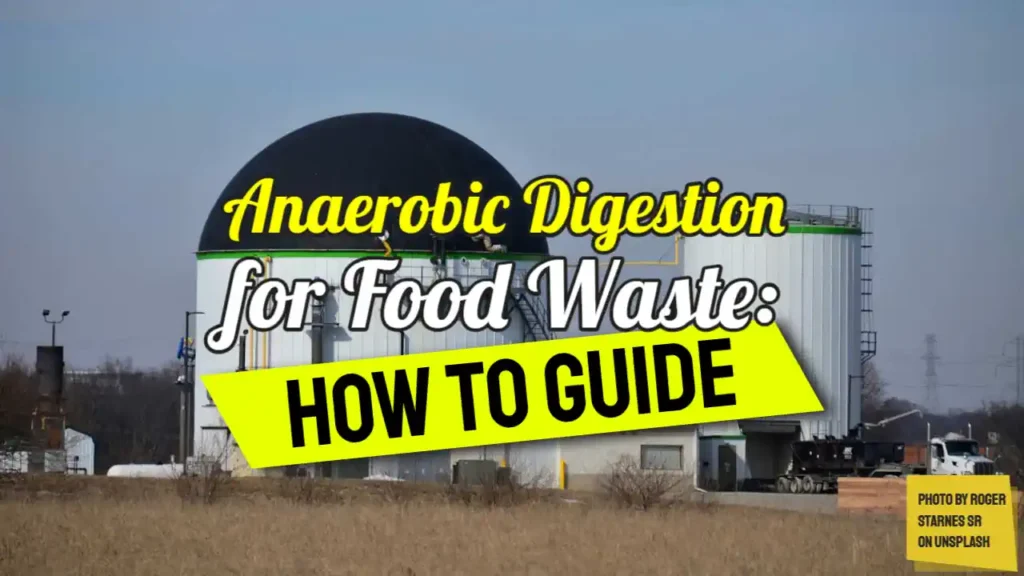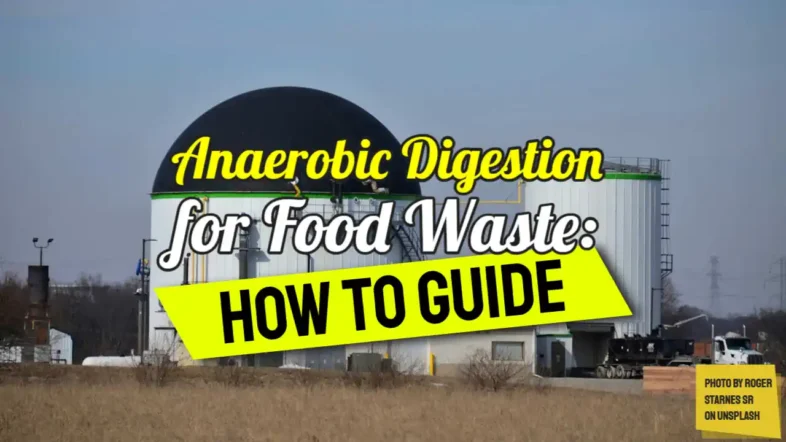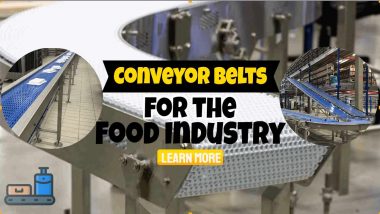“The future will be what we make it.” — Sir David Attenborough. This short guide shows how a proven process can turn a national challenge into a practical solution that supports renewable energy goals.
The UK now sends around 9.5 million tonnes of food waste to disposal each year, and the policy is changing. New business segregation rules start in March 2025, and weekly household collections begin in March 2026, so action is timely today.
This guide explains how anaerobic digestion for food waste works, what inputs and outputs to expect, and practical ways to use biogas and digestate safely. You will see how the full chain links bins and caddies, pre‑treatment, gas use and nutrient return to soil.
Expect clear, practical advice on procurement, compliance and common risk hotspots. The aim is to help councils, facilities managers, farmers, hospitality and community groups adopt a sensible way to cut greenhouse emissions and support the UK energy sector.
Anaerobic Digestion for Food Waste – Key Takeaways
- AD converts wet organic input into biogas and a nutrient-rich digestate, supporting low-carbon heating and power.
- Policy shifts from March 2025–2026 make segregation and collections essential for compliance.
- Well‑designed projects are proven, scalable and reduce landfill methane and greenhouse emissions.
- Practical tips cover what to accept, how to handle gas, and safe use of returned nutrients.
- Guidance targets local authorities, businesses, farmers and community groups with procurement and risk pointers.

What is anaerobic digestion and why it matters for the UK today
Managing organic residues better reduces greenhouse gases and creates local energy supplies. This natural biological process uses microbes that break down wet organics without oxygen to produce biogas and a nutrient-rich digestate.
The waste hierarchy prioritises prevention, reuse and recycling. Energy recovery comes after those steps and should only be used when it yields lower greenhouse gas emissions than alternatives.
The waste hierarchy and avoiding landfill methane
Sending unavoidable organics to a landfill releases potent methane. A controlled plant captures the same gases as biogas, stopping emissions and turning carbon into useful fuel instead of pollution.
From organic wastes to renewable energy and fertiliser
Suitable inputs include household food, sewage sludge and animal manures, provided packaging and contaminants are removed. The two main outputs are biogas for heat and power and digestate to return nutrients to soil.

Well‑managed systems reduce emissions, support local circular economies and follow established guidance for safe operation.
| Input | Main Output | Benefit |
|---|---|---|
| Household food scraps | Biogas & digestate | Lower landfill methane, local energy |
| Sewage sludge | Biogas & fertiliser | Energy recovery, nutrient return |
| Animal manure | Biogas & soil conditioner | Reduced emissions, soil health |
Anaerobic digestion for food waste
Practical plants accept a mix of household scraps, sewage sludge and animal manures to produce energy and nutrients.
Feedstocks: kitchen scraps, sludge and manure
Source‑segregated food collections are ideal when packaging and contamination are removed before processing. Clean supply reduces operational problems and helps meet permits.
Sites also treat sewage sludge and farm slurry. Blending streams — for example, mixing kitchen material with manure — can steady the biology and boost gas yields where logistics allow.

Outputs: biogas and digestate
Conversion happens in sealed tanks in the absence of oxygen under controlled conditions. The main gaseous product is biogas, typically ~60% methane and ~40% carbon dioxide, which can be used on‑site or exported.
Digestate is a nitrogen‑rich fertiliser and soil improver. Quality protocols and testing ensure it is safe for agricultural use and protect land and water.
“Consistent, clean feedstock supply underpins performance and compliance.”
How the digestion process works from bin to biogas
When collections reach the facility, de‑packaging and sorting protect plant machinery and biology. Incoming loads are tipped, magnets and screens remove contaminants, and non‑compliant packaging is taken out before onward treatment.

Pre‑treatment: de‑packaging, size reduction and conditioning
Pre‑treatment heats and mills material to homogenise slurries and reduce particle size. This increases surface area and makes the material easier for microbes to work on during the digestion process.
Inside the digester: hydrolysis, acidogenesis, acetogenesis, methanogenesis
The sealed tank hosts four linked biological stages. Hydrolysis breaks down solids into soluble compounds. Acidogenesis forms short‑chain acids. Acetogenesis converts acids to acetate and hydrogen. Methanogenesis then produces methane and carbon dioxide as the main gases.
Operating conditions: temperature, mixing and gas capture
Tanks operate in the absence of oxygen, typically at mesophilic temperatures around 35°C with controlled mixing. Gas handling systems collect biogas, monitor methane content and remove contaminants before use as heat or power.
From digestate to soil: returning nutrients safely
After treatment, digestate may be dewatered, sampled and stored. Pasteurisation or equivalent hygiene steps meet regulatory standards where required. Farmers apply tested digestate to land to return nutrients while protecting watercourses.
Routine maintenance, instrumentation and data logging keep plants efficient, safe and compliant.
- Reception and de‑packaging protect downstream kit.
- Pre‑treatment improves the biological process.
- Sealed, oxygen‑free tanks produce and capture biogas safely.
- Digestate handling returns nutrients under controlled rules.
Biogas to power, heat and fuels: making energy work harder
Choosing how to use biogas shapes system value and local decarbonisation. Biogas can be burned in boilers to generate heat or used in engines that make both electricity and heat. Upgrading removes carbon dioxide and impurities to create biomethane suitable for the gas grid or as a vehicle fuel.
Combined Heat and Power (CHP)
Combined Heat and Power to generate electricity and heat
CHP engines convert biogas into electricity and capture exhaust heat for space or process heating. This combined heat and power approach raises overall efficiency compared with separate generation.
Upgrading to biomethane for grid injection and transport fuel
Upgrading plants strip carbon dioxide and contaminants to meet grid standards. The resulting biomethane can be injected into the network or compressed for transport fleets, supporting low‑carbon refuse vehicles and HGVs.
Using biogas in homes and industry
Direct boiler use suits sites with steady heat demand, such as glasshouses or food and drink process lines. Options include private wire electricity, grid export or on‑site load matching to maximise income.
Reliable gas cleaning, careful scheduling and routine maintenance keep engines available and emissions within permit limits.
UK legislation, regulation and compliance for food waste and AD
Recent rules mean organisations must act now to meet new collection and segregation duties.
New recycling rules for businesses from March 2025
From 31 March 2025, many non‑household municipal premises in England must separately segregate and present food waste. This duty covers businesses, prisons, hospitals, care homes, office blocks, schools and colleges, garages and transport hubs.
Micro‑firms with fewer than 10 full‑time equivalent staff are exempt. Clear contracts and reliable collection systems will help keep contamination low and supplies steady.
Weekly food waste collections for households from March 2026
From 31 March 2026, waste collection authorities must offer weekly household collections. Councils should plan logistics, public engagement and service design early to reduce confusion and contamination.
Environmental controls: permits, animal by‑products and duty of care
All energy from waste plants must meet environmental permits, animal by‑products controls, duty of care and health & safety rules. Record‑keeping, testing and transparent reporting are essential to show compliance.
Scotland and Wales: established approaches
Scotland has required commercial segregation since 2014 and Wales updated rules in April 2024. These markets show how established systems and contractor relationships can speed rollout and reduce carbon emissions.

“Early engagement with regulators and clear contracts makes approvals smoother and reduces operational risk.”
Planning an AD solution: models, partners and procurement
Planning an effective collection and treatment pathway starts with choosing the right delivery model and partners. Early decisions shape costs, resilience and compliance as new duties come into force.
Local authorities: contracts, collection, and treatment options
Authorities should compare sending material to third‑party plants, negotiating long‑term offtake contracts, or developing local capacity with partners.
Re‑letting or varying contracts can enable weekly household services while keeping gate fees under control. Build clauses that allow price review and supply guarantees.
Businesses: segregating food, approved collectors and gate fees
Businesses must adopt simple segregation routines and appoint approved collectors who accept clean loads. Pricing often links to quality and volume, so good separation saves money.
“Reliable forecasting and contamination controls protect plant performance and budgets.”
- Secure feedstock forecasting and logistics to avoid shortfalls.
- Due diligence on partners: technical record, financial strength and clear guarantees.
- Market engagement to test assumptions with operators, farmers and network firms.
- Include flexibility for grid limits, tariff changes and evolving quality protocols.
| Model | Key benefit | Risk to manage |
|---|---|---|
| Send‑out to third‑party plants | Lower capital needs, quick start | Gate fees, supply reliability |
| Long‑term offtake contracts | Price stability and revenue certainty | Contract inflexibility if markets shift |
| Develop local capacity with partners | Greater control and local value | Higher upfront costs, project complexity |
Communications matter. Clear resident, staff and supplier guidance from day one reduces contamination and protects budgets.
Managing risks across the AD project lifecycle
Every project must build risk management into the plan from day one to avoid costly delays.
Conception and development
Validate feedstock and grid access early. Confirm local volumes, seasonality and competing waste markets. Secure grid or gas connection leads and permits before final investment decisions.
Construction
Select technology that fits your material and aims. Compare wet versus dry systems, pre‑treatment and digestate routes. Structure finance with realistic performance targets and construction contingencies. Ensure insurance covers civils, mechanical and electrical interfaces.
Operation
Operate to protect stable biology and equipment availability. Monitor emissions, odour and noise to meet permits. Implement gas detection, confined‑space controls and planned maintenance to protect staff and neighbours.
Decommissioning
Plan end‑of‑life steps early. Arrange digestate storage run‑down, safe dismantling and site restoration in contracts and bonds.
“Well‑designed plants are robust, but specialist advice reduces technical and financial risk.”
| Stage | Main risks | Mitigation |
|---|---|---|
| Conception | Feedstock shortfall, grid delay | Supply contracts, early grid offers |
| Construction | Interface failures, cost overruns | Integrated QA, contingency budget |
| Operation | Biology upset, engine downtime | Monitoring, spare parts and service contracts |
| Decommissioning | Residual materials, site liabilities | Restoration plan, financial guarantees |
Anaerobic Digestion for Food Waste – Conclusion
This guide shows how captured organic material can deliver local heat, power and cleaner transport fuel.
Turning unavoidable food and other organics into energy stops landfill methane, cuts carbon and returns nutrients to soil.
New duties from 31 March 2025 (business segregation) and 31 March 2026 (weekly household collections) make planning urgent. Act now to secure clean feedstocks, agree contracts and set clear communications.
Key outputs include CHP to generate electricity and heat locally, and upgraded biomethane for grid injection or transport fuel. Practical action—choose the right partners, maintain safe operation and test digestate quality—delivers reliable value.
AD already powers over a million homes and has room to grow as more material is captured. Use this guide to turn policy change into an opportunity for your organisation and community.
Anaerobic Digestion for Food Waste – FAQ
What is the process that turns household food into useful gas and fertiliser?
The process breaks down organic material in the absence of oxygen to produce biogas and digestate. Food scraps, sewage sludge and manure are treated in sealed reactors where micro‑organisms convert solids into methane‑rich gas and a nutrient‑rich residue that can be used as a soil conditioner.
Why is this approach important for the UK today?
It captures methane that would otherwise escape from landfills, cutting greenhouse gas emissions and creating renewable energy. It also supports the waste hierarchy by recovering energy and nutrients instead of sending resources to landfill or incineration.
What kinds of feedstock can facilities accept?
Typical feedstocks include separated household food, catering and commercial organic wastes, sewage sludge from treatment works, and farm slurries. Each plant has specific acceptance criteria to manage contamination and animal‑by‑product rules.
How is incoming material prepared before treatment?
Pre‑treatment usually involves de‑packaging, screening to remove contaminants, size reduction and conditioning to create a consistent, pumpable mix. Proper sorting reduces downtime and improves gas yield.
What conditions are needed inside the reactor for efficient gas production?
Operators control temperature, mixing and retention time to support the biological stages: hydrolysis, acid production, acetogenesis and methane formation. Good gas capture and odour controls are essential for safe operation.
How is the biogas used once it is produced?
Biogas can fuel Combined Heat and Power (CHP) units to generate electricity and heat, be upgraded to biomethane for grid injection or vehicle fuel, or be used directly in industrial heat processes and some homes where suitable.
What is digestate and how is it handled?
Digestate is the leftover material after gas removal. It contains nutrients like nitrogen and phosphorus and can be separated into solids and liquids for use as a soil improver or fertiliser, subject to quality testing and application rules.
What environmental controls and permits are required in the UK?
Operators must meet permits and environmental standards covering emissions, waste acceptance, animal‑by‑product handling and duty of care. Planning permission and pollution prevention measures are also required.
How will upcoming UK rules affect collections and business responsibilities?
New recycling regulations require businesses to separate food for collection from March 2025, and households will see weekly food waste collections from March 2026. Businesses must use approved collectors and meet storage and segregation requirements.
What are the main risks when planning a project and how are they managed?
Key risks include feedstock supply security, grid connection for power export, technology choice, finance and permitting. Early feasibility work, robust contracts, insurance and sound procurement reduce these risks.
How do local authorities and businesses usually work together on these services?
Councils arrange collection contracts and choose treatment options, while businesses segregate food, use authorised collectors and pay gate fees. Collaboration helps ensure reliable supply chains and accurate charging.
Can this technology reduce transport impacts and emissions?
Yes. By turning waste locally into energy and fertiliser, it cuts long‑distance transport to landfill and lowers lifecycle emissions. Upgrading to biomethane also provides low‑carbon transport fuel.
What happens at end‑of‑life for a treatment site?
Decommissioning plans cover safe dismantling, remediation and site restoration. Operators must meet legal obligations for waste removal and environmental reinstatement at closure.
How do plants ensure safety and minimise odour or pollution?
Well‑designed containment, gas tightness, odour abatement systems and continuous monitoring keep sites safe and limit local impacts. Regular maintenance and staff training are crucial.




